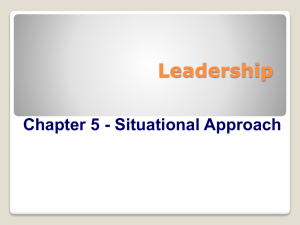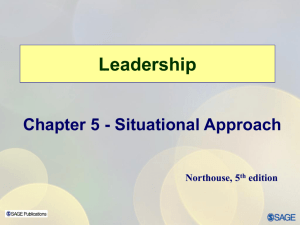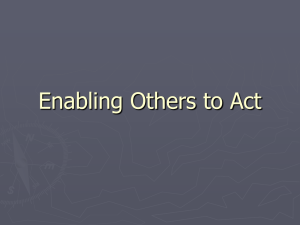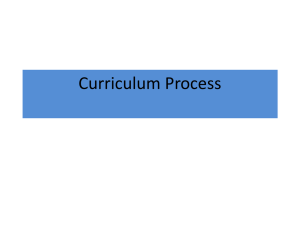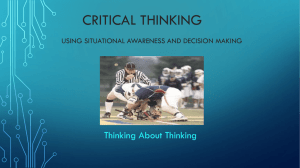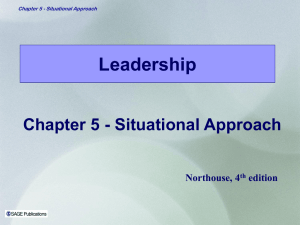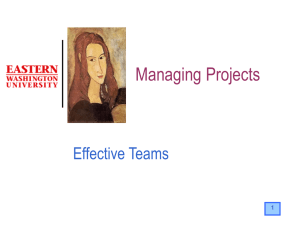Situational Leadership
advertisement
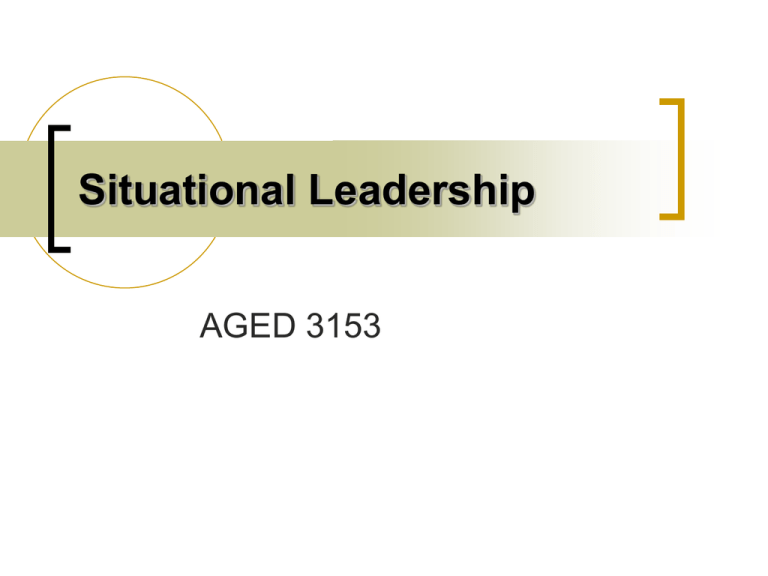
Situational Leadership AGED 3153 Leaders don't force people to follow -they invite them on a journey. ~ Charles S. Lauer Overview Situational approach perspective Leadership styles Developmental levels How does the situational approach work? Situational Approach Perspective Hersey & Blanchard– 1969 Reddins 3-D management style theory Leader-focused Different situations require different leadership Situational Approach What are the two dimensions? Effective leaders recognize what employees need assess competence and commitment skills and motivation vary over time adapt their own style to meet those needs Situational Approach Blanchard & Blanchard et al.—1985 Situational Leadership II (SLII) Model Two parts Leadership style Development level Leadership Styles Behavior pattern of an individual who attempts to influence others. Developmental Levels Degree to which sub. have the competence & commitment to accomplish a given task/activity. S1, S2, S3, S4 S3 D1, D2, D3, D4 S2 D4 S4 S1 D3 D2 D1 The Four Leadership Styles Supportive Behavior High High Supportive Low Directive High Directive High Supportive Low Supportive Low Directive High Directive Low Supportive Low Directive Behavior D4 High D3 D2 Moderate High D1 Low S1– Directive Style S1 Directing High Directive Low Supportive Leader: Focuses communication on goal achievement Spends less time using supportive behaviors Goal achievement instructions what and how close supervision S2– Coaching Style Leader: S2 Coaching High Directive High Supportive focuses communication on: goal achievement supporting subordinates’ socioemotional needs involvement through encouragement and soliciting subordinate input still makes final decision S3– Supporting Style S3 Supporting Leader: does not focus solely on goals uses supportive behaviors to bring out follower’s skills High Supportive Low Directive listening praising asking for input providing feedback delegates day-to-day decisionmaking control S4– Delegating Style S4 Delegating Leader: offers less task input and social support Lessens involvement in: Low Supportive Low Directive planning control of details goal clarification Gives subordinates control Refrains from intervention and unneeded social support Developmental Levels D1 Competence Commitment Low High D2 Competence Commitment Some Low D3 Competence Commitment Mod./ high Low D4 Competence Commitment High High Indicators Experience Related skills Intelligent & can think through problems Can find & use resources Self-directed Interest in activity Volunteers for the activity Discussion with others Positive attitude toward group Follows through Situational Leadership Continued AGED 3153 Treat people as if they were what they ought to be and you help them to become what they are capable of being. ~Johann Wolfgang Von Goethe How does the situational approach work? Focus Followers move forward and backward Effective leaders Along the developmental continuum diagnose where subordinates are on the developmental continuum adapt his/her leadership style to the prescribed style Leaders must be flexible in their leadership behavior Situation Evaluation Questions What is the task that subordinates are being asked to perform? How complicated is the task? Are the subordinates sufficiently skilled to accomplish the task? Do they have the desire to complete the job once they start? What are some situational leadership strengths? What are some criticisms of the situational approach? How could you apply the situational approach? Application Useful in consulting applicable to everyone during all project stages in any type of organization
